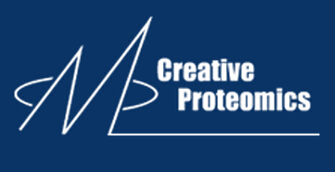Description & Specifications
|
Creative Proteomics provides DIGE service which allows for simultaneous separation of up to three samples on one gel, bringing a new level of statistical confidence and reliability to 2D gel electrophoresis. Differential in Gel Electrophoresis (DIGE) is a technique to monitor the differences in proteomic profile between cells in different functional states. This is done in three steps. First, samples are tagged with unique fluorescent dyes. Second, they are run together on the same 2D-PAGE gel. Finally, after the run completes, the different fluorescent images of the same gel are superimposed over each other. DIGE allows the study of proteins that are expressed differentially, as well as those that are common between samples. This technology allows for simultaneous separation and comparison of up to three samples on one gel. In traditional 2D-PAGE, different samples are often separated in multiple gels. Those gels are then overlapped to compare one gel to another. Due to differences between gels in spatial resolution and spot intensities, the overlaying of images and correct matching of proteins is difficult. There can also be variations in protein uptake by the isoelectric focusing strips, incomplete protein transfer from the first to the second dimension gel, and local inconsistencies in gel composition, field strength or pH gradients. These gel-to-gel variations can mask the biological variation between the samples. Unfortunately, not all of these variations are avoidable; they can occur for a number of reasons. Thus, quantitative comparisons of protein expression levels are difficult using 2D-PAGE. In DIGE, protein mixtures are pre-labeled, prior to electrophoresis, with cyanine dyes that guarantee co-migration of proteins. This co-migration on the same gel eliminates running differences between samples. In addition, the samples are subjected to the same environment and the same procedures throughout the experiment. Experimental variation is minimized in this way. The cyanine dyes (Cy2, Cy3 and Cy5) used for DIGE are N-hydroxy succinimidyl ester derivatives, are covalently tagged to the ε-amino group of lysine residue of proteins, and replace the ε-amino group positive charge with the positive charge of the dye. The binding of the dyes introduce small but matched increases in molecular weight to the protein. Since these dyes are hydrophobic, to prevent precipitation of proteins, only one lysine residue per protein is labeled (minimal labeling). Minimal labeling limits the fluorescence intensity and thus the sensitivity of the stain. The dyes are all charge-matched and molecular mass-matched to prevent alterations of the isoelectric point, and to minimize dye-induced shifting of labeled proteins during electrophoresis. The cyanine dyes (Cy2, Cy3 and Cy5) used for DIGE are N-hydroxy succinimidyl ester derivatives, are covalently tagged to the ε-amino group of lysine residue of proteins, and replace the ε-amino group positive charge with the positive charge of the dye. The binding of the dyes introduce small but matched increases in molecular weight to the protein. Since these dyes are hydrophobic, to prevent precipitation of proteins, only one lysine residue per protein is labeled (minimal labeling). Minimal labeling limits the fluorescence intensity and thus the sensitivity of the stain. The dyes are all charge-matched and molecular mass-matched to prevent alterations of the isoelectric point, and to minimize dye-induced shifting of labeled proteins during electrophoresis. To study differential expression of proteins, there is no need to run multiple gels. Loss of proteins even in the low molecular weight range is reduced since no post-electrophoretic processing (fixation or destaining) is necessary. This method is more quantitative than the standard colorimetric staining methods, both with regard to sensitivity as well as linearity. |

